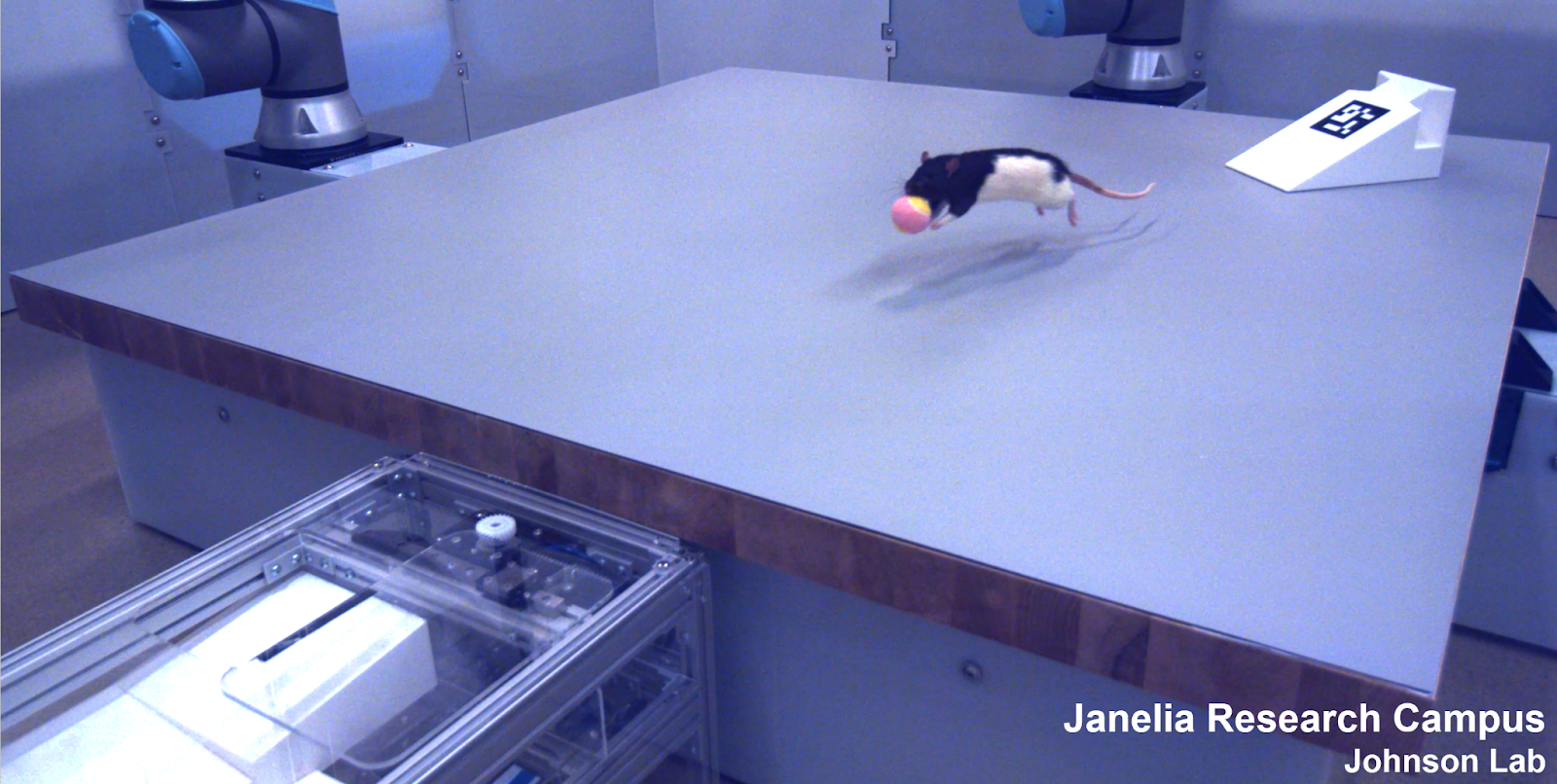Abstract
My lab aims to measure and model how rodents learn and use intuitive physics knowledge to solve problems. Intuitive physics refers to knowledge that humans use to understand and predict how objects in 3D scenes are likely to move and interact over time. For example, humans can look at a novel scene, visually parse it into component objects, infer properties of these objects from experience, and use something like an “intuitive physics engine” to mentally simulate how the scene may unfold. The extent to which non-human animals use intuitive physics to learn about objects and predict 3D scene dynamics is poorly understood. In this talk, I’ll describe our early efforts to develop cognitive tasks (like fetch) to explore how rats and mice use intuitive physics concepts (like mass, momentum, occlusion, collision, containment, stability) to achieve goals. To model behavior and learning, we are beginning to use high-resolution 3D pose estimation and imitation learning to train virtual rodents to solve similar tasks in the physics engine MuJoCo. Our hope and expectation is that the basic cognitive building blocks of physical scene understanding are conserved in non-human mammals, especially in intelligent predators like rats, and that we can use physics-based tasks to learn about the behavioral algorithms (and neural implementations) of common sense.

Biography
I grew up in Kansas City and studied biology and psychology as an undergrad at Washington University in Saint Louis. After that, I worked as a research tech in Daniel Kerschensteiner’s lab at the WUSTL School of Medicine and here became fascinated by retinal circuit function and visual information processing in general. As a neuroscience PhD student in Florian Engert’s lab at Harvard, I worked with engineers, experimental neuroscientists, and machine learning researchers to build new tools to measure and model naturalistic larval zebrafish behavior. I started my group at Janelia in January 2021 and aim to collaborate with engineers, experimentalists, theorists, and computational researchers to improve understanding of how rodent brains implement intuitive physical reasoning to predict the future and plan.
